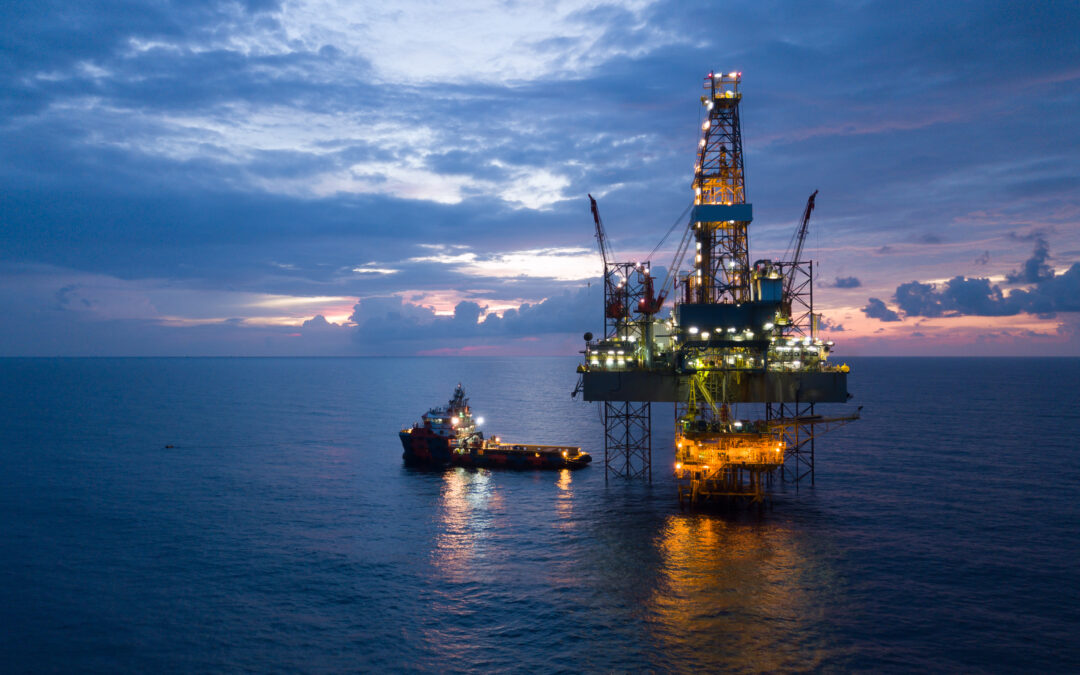Not all the earth’s oil reserves are found beneath dry land or shallow waters. In fact, many untapped resources are located beneath the sea floor of our oceans. That’s why offshore drilling is so necessary. Though offshore drilling can be dangerous, using the right equipment and certain safety precautions can be rewarding and lucrative.
Drillmax® is an industry-leading manufacturer of valves used in oil and gas drilling operations worldwide. Read on to learn more about offshore drilling and the equipment needed for successful operations.
WHAT IS OFFSHORE DRILLING, AND WHY DO WE NEED IT?
Offshore drilling may be defined as extracting petroleum and natural gas from beneath the ocean floor. A fixed or mobile platform is often used to drill over 4000 feet below the surface of the seabed. These rigs are found off coastlines, in the open ocean, or in deepwater regions and can employ hundreds of people simultaneously.
There are a number of reasons that offshore drilling is essential to our society as a whole, but perhaps the most important is that it provides domestic economic self-sufficiency. Recent foreign oil production has shown that the price and availability of petroleum products greatly determine our domestic economy. Even with efforts to reduce the consumption of fossil fuels, as the population increases, the need for oil and gas will ultimately rise as well. With nearly 75 percent of the earth’s surface covered in water, exploring those previously unexplored areas only makes sense.
With an increase in oil production comes an increase in employment. Offshore drilling offers many opportunities for high-paying positions, from rig workers to scientists and technologists developing and refining systems to make offshore drilling safer and more efficient. And when offshore drilling is performed with the latest technology, the most durable and efficient equipment, and knowledgeable employees, offshore drilling has proven to provide a unique ecosystem for birds, fish, and other marine life.
DRILLING PROCESS
It can be challenging to drill under the ocean. Not only is extracting the oil more difficult, but using specified extraction techniques that eliminate negative environmental impacts requires special care. In addition, logistically, it is more challenging to build the platform and set up the drilling and extraction equipment. For the process to be successful, drilling must be done without water flowing into the hole or oil rising to the top.
To drill the underground wells, drill pipes are connected to a device similar to a large drill bit, drilling deep into the ocean floor, moving deeper until mud begins to rise to the surface, lubricating the bit, sealing the wall of the well and controlling pressure inside of the well. Drilling can take a while, with each phase of drilling prompting a lining of the well with a casing that is expanded and packed by a packer.
EXTRACTION PROCESS
When the drilling has been completed, a production casing is installed to close the well, allowing the oil flowing into the well to be extracted. The product that rises to the platform is a mixture of crude oil, natural gas, water, and sediments. Some offshore drilling platforms are equipped with production facilities to separate the mixture. The refinement process continues when the product is moved via underwater pipelines and oil tankers that transport the product to refineries.
OFFSHORE DRILLING IS A GLOBAL INDUSTRY
Offshore drilling is a multibillion-dollar industry. Across the globe, there are no less than 500 fixed or mobile offshore rigs, with most of the world’s offshore rigs being found in the North Sea, Gulf of Mexico, Persian Gulf, Far East, and more. They take years of planning, preparation, and testing. Most countries need to explore offshore drilling to remain energy self-sufficient. According to data, the value of the global offshore drilling market was over $112 billion in 2022, with steady growth projected, estimated in 2031 to be about 149 billion dollars.
TOUGH DRILLING JOBS REQUIRE TOUGH EQUIPMENT
High-pressure drilling requires rugged valves engineered for the rigorous requirements of offshore drilling. At Drillmax®, our valves are designed for oil drilling, with accessible open/close functions, in-line repairability, and drop-tight sealing. Our valves are tested for quality assurance, so you know you are getting a high-quality product designed for your application.
DRILLMAXPRO® HP FLOAT VALVES
DrillmaxPro® HP Float Valves are designed for high-pressure drilling and are perfect for deep offshore drilling. We offer a full-flow flapper-type valve and a plunger-type valve with robust cages and rigid internal components to optimize your drilling.
DRILLMAX® DRILL PIPE FLOAT VALVES
Drillmax® offers a complete line of float or “blue valves” for top performance and reliability. They are designed to prevent drilling fluids, cuttings, and other debris from flowing back up the drill string while providing additional blowout prevention. Manufactured to reduce corrosion and erosion and optimize wear, these drill pipe floats are essential for offshore drill rigs.
GET A QUOTE FOR DRILLMAX® OFFSHORE DRILLING VALVES
Offshore drilling can put stress and wear on your equipment. That’s why it is vital to use valves designed to withstand the rugged use specific to offshore drilling.
Contact our knowledgeable staff for more information on what makes Drillmax® the best valve for your application. Call today to get a quote and find out more.
Image source: James Jones, Jr. – Shutterstock
